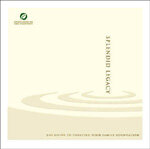Splendid Legacy: The Guide to Creating Your Family Foundation
Upon perusing the table of contents of Splendid Legacy one is impressed immediately that the last chapter, right before the numerous appendices, is titled "Commencement." That alone sets the tone that distinguishes this book from others on the topic. Commencement, that word that evokes images of both proud accomplishments and hopeful beginnings, tells us that many who are embarking on the establishment of family philanthropies are turning aside from the full-time pursuit of wealth to an equally intense engagement with the sharing of it. This chapter is a reprint of a presentation by Paul Ylvisaker, a visionary man who inspired many in the field of philanthropy.
Esposito, the founding director of the National Center for Family Philanthropy, along with associate editor Joseph Foote and project manager Andy Carroll, has orchestrated a choreography with 16 authors to create a lively composition. In this lush monograph, seeded with personal anecdotes, reminiscences, and advice, the NCFP has produced a book that is both highly personal and supremely professional. By adding dozens of sidebars with real-life examples (a few are anonymous, but that is the exception), the thoughts of numerous philanthropists make for intriguing reading. Perhaps the gemstone is an interview with Bill Gates, Sr., father of the Microsoft founder, who elucidates his role in fulfilling the vision of the Bill & Melinda Gates Foundation.
The identifier "family foundation" is not a legal term, but we know that these entities represent the fastest growing segment of foundation philanthropy. Foundation Center data indicates there is a substantial audience for the information that this book provides. As of the year 2000 (the most recent year data is available) 24,434 grantmakers were recognized as family foundations. And of the 6,400 active foundations created in 2000, the vast majority were established by an individual or a family of donors.
The major topics addressed in the book are mission, role of the family, legal issues, establishment, investment, grantmaking, and communications. Some of the practical issues considered here include where to set up the office, the decision to hire paid staff, how to say "yes" or "no" to grantseekers, and selecting assets that will fund the foundation. Four models for staffing arrangements, including the strengths and problems of each, are outlined.
This is not a book to be read from front to back, or in a rush. It's best to savor this tome, and perhaps to share it among family members. It would surely provoke discussion and enhance planning for a family network. One lesson becomes clear: today's family has many options for philanthropic expression.
A brief annotated bibliography for each chapter is appended, and the book is indexed.
For citations to additional literature on this topic, refer to the Literature of the Nonprofit Sector Online, using the subject heading "Family foundations."






